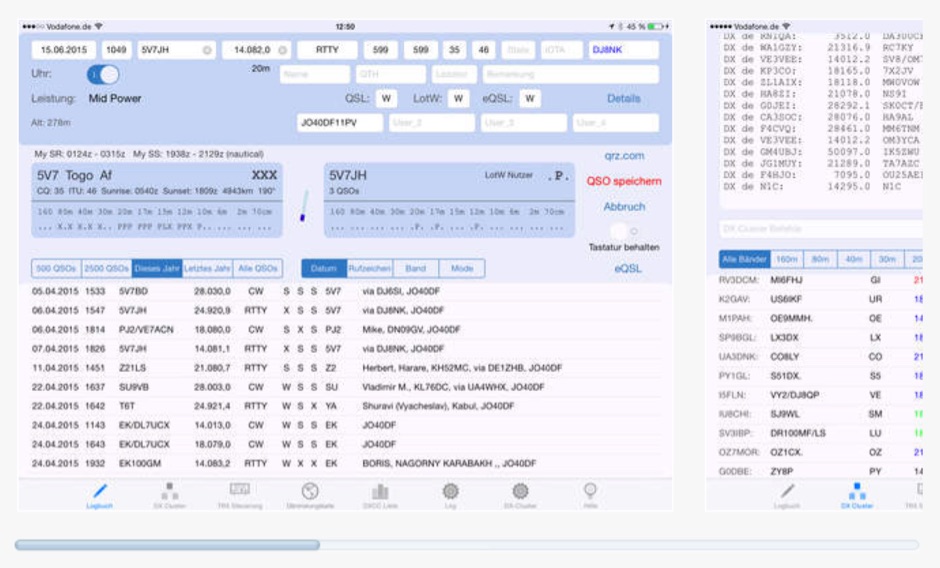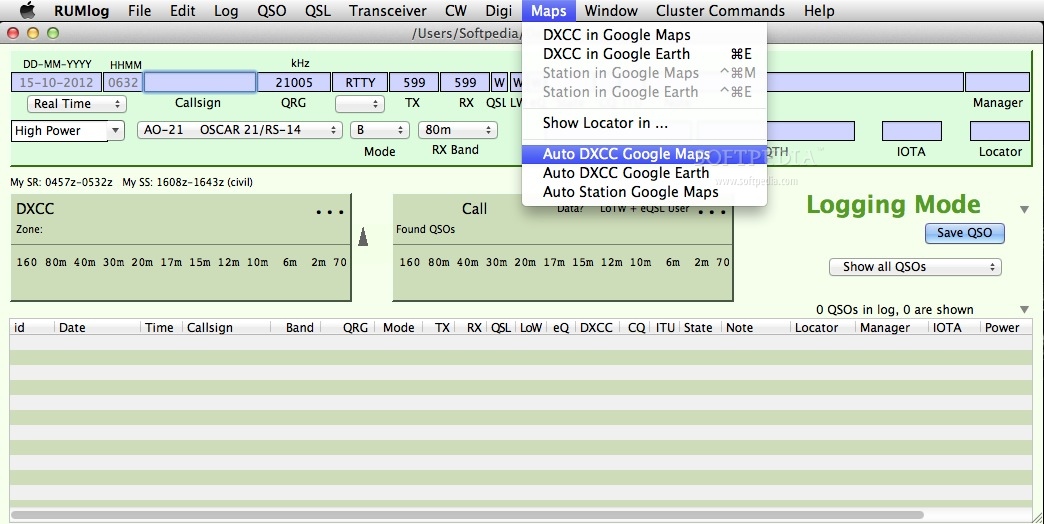

RUMlogNG has import and export functions to allow exchange of log data to other logging tools.Įxcept the DXCC statistics, RUMlogNG tracks the most interesting areas of the world for the most important awards: IOTA islands, CQ zones, ITU zones, Grid Squares, US States, US Counties, German DOKs and more. microHAM devices are supported, the MKII and DKII are fully configurable. More controls are provided for the Elecraft K3 or KX3.

Kenwood, Elecraft, Yaesu and Icom transceivers are supported. RUMlogNG can interface with your transceiver, setting the main parameter on your TRX from the logbook or vice versa. RUMlogNG will separate DX-spots and alert you ,new one’ DXCC or IOTA spotted. A simple terminal is integrated for a Packet Radio connection. RUMlogNG can establish a dx-cluster connection via the internet or to your local skimmer. Quick log searches or more detailed log queries and export routines are possible. RUMlogNG keeps you up to date about worked, confirmed or missing DXCCs and provides you with country lists and detailed statistics. Provisions are made to query the qrz.com or online library. RUMlogNG can use the K7PT dx activity and QSL manager database to inform you about current dx activities and it can build and use an own manager and IOTA database, extracting the information from dx-cluster spots.
RUMLOG N G DOWNLOAD
It’s just a mouse click to upload or download new QSLs to/from eQSL or LoTW. You can get different statistics for paper- or LoTW QSLs. The Logbook of The World (LoTW) and eQSL are fully supported, and you can create files for the Global QSL service very quick. Using RUMlogNG you can print QSL label and manage your incoming paper QSLs.
RUMLOG N G FULL
Work in your favorite contests or run a dx-pedition using RUMlog, including full scoring and ESM mode. Clublog data are used for automatic DXCC recognition.įour user definable logging fields are available for your convenience. RUMlogNG can handle an unlimited number of logs and an unlimited number of QSOs per log. Basic logging features are included for the higher bands up to 1.2 cm and for satellite.


RUMlogNG is a HAM radio logging, QSL handling and printing tool, especially made for the short wave DXer, made by a DXer. The successful launch is just the beginning of an arduous nearly one-month journey.Tom Lindner (DL2RUM) has released v5.7 of RUMlogNG for direct download or via the App Store. The telescope was intricately folded like an origami toy before it was launched. Now in space, hundreds of moving parts will need to fall in place precisely as designed for the telescope to unfold. In the next few weeks, step by step, various components have to be deployed before the telescope reaches its final configuration. A single misstep can reduce the whole telescope into space junk. Speeding towards its destination, as of now, the JWST has successfully deployed its solar array, released its antenna and completed its mid-course correction burn. Before day 7, the sun-shield would be deployed. On day 10, nerves will be on edge as the engineers hoist its secondary mirror to its position. The rest of the mirror segments would be unfurled, step by step, before day 14. On day 29, the JWST is expected to fire its thrusters to enter its predestined orbit around L2. After it arrives at its destination, the 18 telescope mirror segments will have to be aligned flawlessly this will take about 10 days. While the most giant ground-based telescopes revealed galaxies over 5 billion light.
RUMLOG N G WINDOWS
This will be followed by weeks of testing and calibration. Rumlog n g windows Maryland judiciary case search abbreviations Space telescope. The first image from the telescope is at least six months away. The thermal turbulence of the Earth’s atmosphere hinders telescopic observation of the universe. Stars twinkle, light from the faint stellar objects are absorbed by the thick lower atmosphere, and part of the spectrum, such as infrared rays from space, hardly reach the ground. By placing the telescopes on a high mountain top, we avoid as much atmosphere as possible. Yet the atmospheric turbulence hinders the super-sharp images of objects in space. Telescopes in space altogether avoid the atmospheric disturbance and provide us with a clear, sharp and more profound vision of the farthest reaches of the universe. While the most giant ground-based telescopes revealed galaxies over 5 billion light-years away, the Hubble space telescope has identified the farthest known galaxy located at whooping 13.4 billion years in the past.


 0 kommentar(er)
0 kommentar(er)
